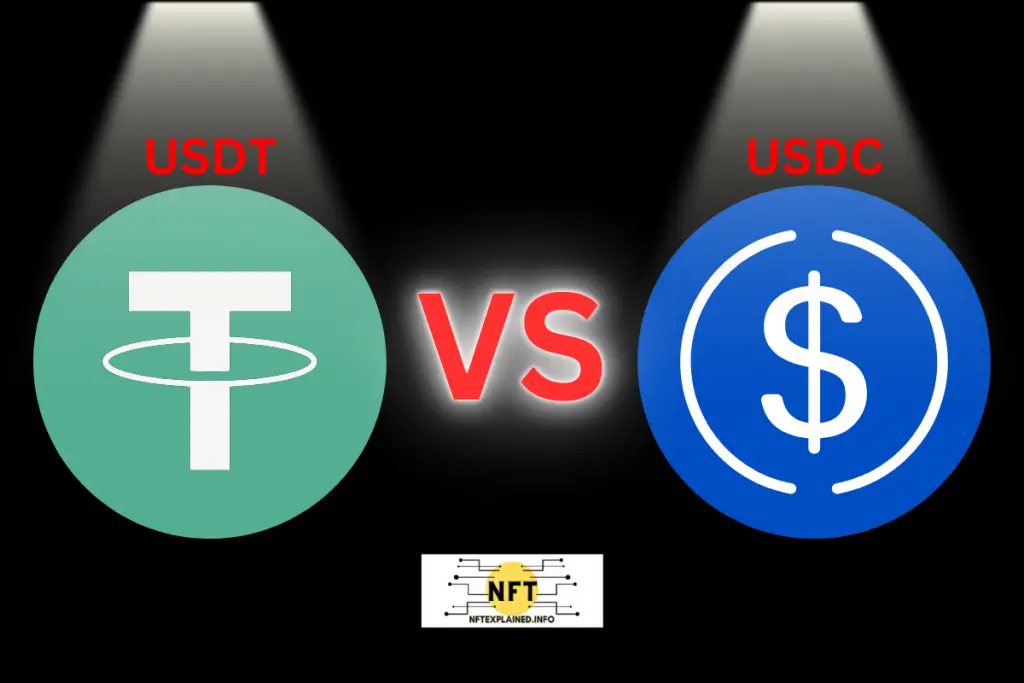
USDT and USDC are widely considered to be the top two stablecoins; this is not just our opinion, it’s a statement that has been formulated by examining the top stablecoins by market cap.
So which is the superior stablecoin?
As a general statement, it’s impossible to say which stablecoin is safer as each stablecoin has its pros and cons – which we will examine. By looking at market cap, volume traded, parent company, transparency, and their ability to remain pegged at $1 USD, we will help you decide the safer stablecoin.
Before we examine these factors, we want to preface that we have a full article covering each type of stablecoin and how they work, which can be found here.
USDT vs USDC: Market Cap. & Volume Traded
USDT is the largest stablecoin by market cap; currently, USDT sits just shy of an $80 billion market cap and has a higher volume traded (over the past 24 hours) than USDC. USDC has a market cap of just over $34 billion, and has enjoyed rapid adoption since 2021, fueled by a growing interest in decentralized finance.
Being built on the Ethereum blockchain, USDC offers some DeFi features, which enables it to tap into the security and decentralization provided by the Ethereum blockchain. That being said, both parent companies, a topic we will explore, are centralized and subject to typical government regulations.
Overall Tether emerges the winner of this metric as it has a market cap that is double of USDC and therefore and unsurprisingly, it has a higher 24 hour trading volume.
USDT vs USDC: Parent Company & Transparency
iFiniex Inc. the owner of Tether has faced some controversy over its transparency of reserves in the past; however, Tether now provides a reserve breakdown. Circle’s USDC has had longstanding transparency with monthly attestation reports about reserves from companies like Grant Thorton and Deloitte.
Up until March 2019, Tether claimed that their USDT stablecoin was backed 1-to-1 with USD reserves. However, they later clarified that reserves could include non-cash assets or loans. Since then, Tether has improved transparency, providing a reserve breakdown showing over 82% of funds in cash, cash equivalents, and short-term deposits, with 71% of that sector in US Treasury bills.
Tether’s parent company settled a lawsuit with the New York Attorney General for $18.5 million. The suit claimed that Bitfinex, a crypto exchange under the same ownership, misused Tether’s reserves to cover $850 million in losses. As part of the settlement, both Tether and Bitfinex must submit quarterly reports for two years and New York residents are barred from trading with iFinex Inc.
While denying any wrongdoing iFiniex Inc. stated, “we share the Attorney General’s goal of increasing transparency…”
In the battle of transparency, Circle’s USDC emerges as the victor. Since 2018, Circle has provided monthly attestations from reputable accounting firms like Grant Thornton and Deloitte. Although these are not audits, they demonstrate a higher level of transparency than its competitors. Thus, Circle’s USDC stands out for its commitment to transparency.
USDT vs USDC: Stability ($1 USD)
During market turmoil, Tether briefly dropped to $0.95 (during the collapse of Terra Luna) and USDC to $0.87 (during the collapse of Silicon Valley Bank) before quickly regaining the $1 peg. Outside of this, both stablecoins have maintained their peg, only deviating in value by a few cents.
Despite facing market volatility during the collapse of Terra Luna, Tether demonstrated its strength as a stablecoin by quickly recovering its $1 peg after briefly dropping to $0.95 due to investors withdrawing over $3 billion in transactions. Experts suggest that the de-pegging was driven more by market sentiment than a lack of reserves, highlighting Tether’s resilience and ability to handle large transaction volumes.
Despite the collapse of Silicon Valley Bank, where Circle announced $3.3 billion in cash backing USDC was held, USDC displayed remarkable resilience in maintaining the $1 peg. While USDC’s value briefly dropped to a low of $0.87 during the collapse of Silicon Valley Bank, the stablecoin demonstrated its resilience by quickly recovering.
Circle’s unwavering commitment to the stability of USDC was demonstrated through its proactive measures to use its own resources to cover any reserve shortfalls, showcasing Circle’s strong dedication to ensuring the reliability of USDC.
Before the article ends, we want to state that we’re not financial advisors and that the information we’re sharing is for educational purposes only.
Let our team know which stablecoin you trust more by connecting with us on our socials.
Subscribe to our YouTube: https://www.youtube.com/@BlockchainAnimations/videos
Message us on Twitter: https://twitter.com/nftexplained
Find us on Instagram: https://www.instagram.com/nftexplained.info/
Work with our partners. Buy a Ledger hardware wallet! Trade stocks & crypto on Webull – get 2 free stocks! U.S. users can get a crypto trading discount on Binance!
